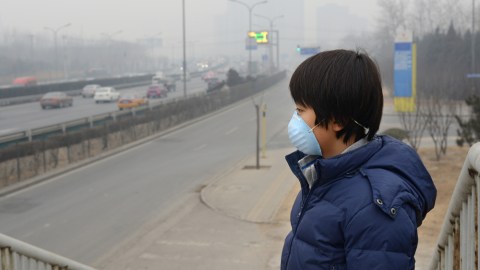Could China be Both the Good and Bad Guy on Air Quality?

This Tuesday, Beijing put out its first-ever “red alert” for bad air quality. The alert is part of a four-tiered system that was created two years ago to help inform the public of air-quality hazards. At the time that the alert went out, the density of PM 2.5 particles, which is a common measure of air quality, was 10 times the maximum level recommended by the World Health Organization (WHO).
But this isn’t even the worst level that Beijing’s air quality has reached. A week before, the PM 2.5 particle density was 40 times the recommended level. The air quality in China is routinely so bad, that one artist even decided to make a statement by vacuuming the air for 100 days and forming a brick out of the particles he captured.
The air pollution is detrimental to all, but it’s worst for children (who have smaller lungs), and people with pre-existing heart disease or lung issues. And according to WHO, air pollution also contributes to getting cancer. Over the worst of the bad air days, it’s common to see much less activity out on the streets, and for those who are walking or biking around to wear face masks that help alleviate the intake of bad air. The decision to use the red alert system now comes after the Chinese government faced criticism for not having activated it on prior bad days.
However, bad air quality is only part of China’s development story. The country is also seeking in many ways to be a leader in green energy. Paradoxical? Perhaps. But like it or not, Chinese companies have invested $80 billion in renewable energy source projects, such as hydroelectric, wind, and solar power in 2014. They outspent every other country in this regard.
China is certainly taking steps that could position it in the future to have a huge impact on reducing emissions and protecting air quality, but it has some immediate concerns to deal with first. Despite its investments, China still only gets 10 percent of its energy from renewable sources and much of the country still relies on coal for power, since it is cheap and plentiful.
In the end, perhaps China’s current pollution problem will be the impetus the country needs to take an even more aggressive approach to renewable energy and greenhouse gas emissions. Certainly those most affected by the poor air quality days should hope so.




